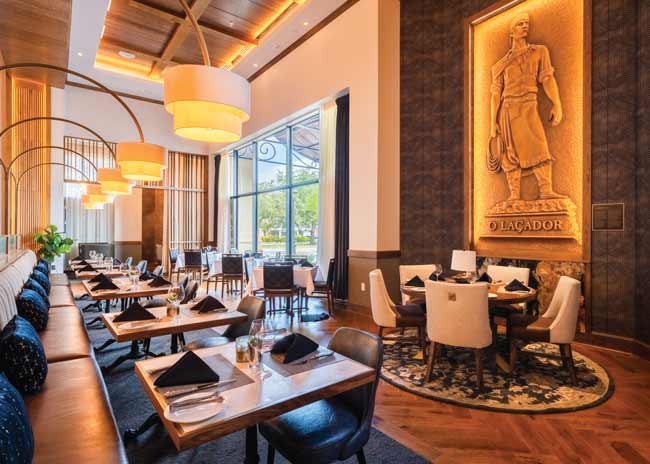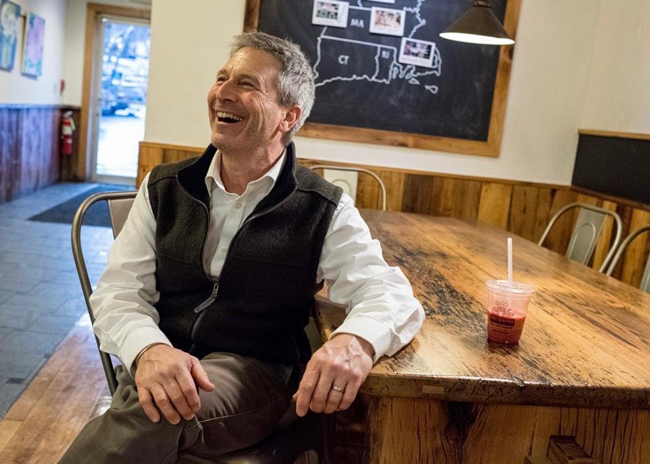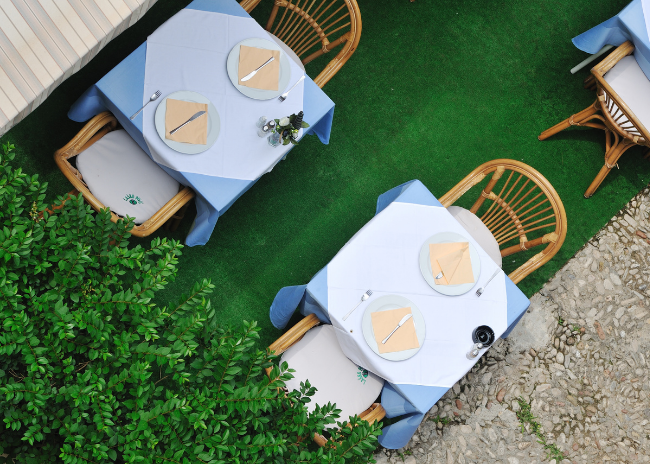Speed and efficiency are the hallmarks of any foodservice operation, but for drive-thrus, these aspects are crucial. Today’s drive-thrus are not just handling immediate drive up customers but also may be fulfilling a large number of online orders and subsequent traffic.
When it comes to design, it pays to get it right, as drive-thrus are a big revenue generator. According to a recent report by Quantum Real Estate Advisors Inc., Americans visit drive-thru lanes about 6 billion times each year, with between 60% and 70% of most fast-food sales coming from drive-thrus. An estimated 70% of overall fast-food sales are from drive-thru orders.
Drive-thru designs depend on a wide range of variables, but the makeup is highly dependent on the amount of real estate and operation’s volume.
No two drive-thrus are the same. However, all require proper permits and rely on consistent branding both inside and outside the building.
Initial requirements will include conducting site surveys, obtaining permits and choosing appropriate drive-thru components.
Goal of the Space
With drive-thru station designs, space is at a premium. For this reason, it can be a challenge to accommodate the equipment and supplies necessary to get orders out expeditiously.
In addition to kitchen display systems to monitor orders, hands-free communication is critical to connect staff to the kitchen and ordering customers.
By the same token, with this station’s design it’s necessary to account for the employees’ physical and cognitive capabilities. Ergonomics play a key role in drive-thru design.
Speed of service is always a priority at drive-thrus. As labor shortages continue, adjustments need to be made to accommodate minimal staffing. This means that the amount of space allocated for putting together and staging orders should be sufficient with minimal steps required.
Inside, there also should be a system for condiments, utensils, napkins and to-go containers and bags that can remain organized with all the accompaniments needed. This may be set up vertically rather than horizontally. For maximum efficiency, the station should be laid out no greater than 90 degrees from customers.
Drive-thru areas can take on different formats. Traditional single-lane types have one line or path for customers to place and pick up orders one at a time. Dual lanes, seen in high-volume operations, provide two lanes for ordering, paying and picking up food. Y-lane formats have two lines for ordering that merge into a single line for paying and food pick up. With tandem formats, two drive-thru lanes operate side-by-side with a similar process as dual lanes.
Critical Components
The design process should start by looking at the operational processes. With this method, drive-thru station components are analyzed item by item.
Prior to pulling in the equipment and confirming its size and type, the amount of food that needs to get through at one time should be determined. The next step is looking at the station in relation to the rest of the space.
This is because, with drive-thru designs, it’s important to look at logistics and adjacencies. The objective is to have everything needed within the drive-thru station so employees don’t have to leave their posts.
Looking at the drive-thru’s interior, vertical space should be properly allocated and fully utilized.
On the outside, drive-thrus are made up of customer zones. These include an entry area, a pre-order zone with a menu board, a zone for placing orders, a post order zone, a pay area that may be consolidated with a pickup window, and an exit zone. Messaging is also crucial. There may be presale messages; signage with limited time offers, value or combo meal information, details on new items and an opportunity to influence impulse purchases.
As far as outside components, drive-thru systems often include pre-order and standard menu boards that may include canopies for added protection from inclement weather, clearance bars that protect the canopy from being hit by cars, and directional signage to aid the flow of traffic. Timer systems can be used to track speed of service and overall performance.
In recent years, equipment innovations and automation have played big parts in expediting orders. Streamlining the order fulfillment process with the latest technology not only enhances speed of service but also simplifies onboarding and training and can save labor.
Advanced artificial intelligence (AI) systems can take the place of an employee. This technology can take orders and send them to back-of-the-house employees while also submitting it to POS systems. AI can be integrated with digital menu boards for enhanced functionality and labor savings.
Primary Considerations
The logistics and components a drive-thru requires are driven by the concept as well as the design.
Designers need to allow plenty of space for packaging. Beverage stations should be conveniently located and large enough to prevent bottlenecks. For ready-to-drink beverages, additional reach-in refrigeration adjacent or within the drive-thru station may be warranted.
High-volume concepts should rethink straight assemble-to-order models and look at what can be done ahead of time. Advancements in holding equipment create strong opportunities for more cooking ahead and assembling to order to speed drive-thru times.
Typically, the budget will dictate whether a static or digital menu board is warranted. While a digital version allows for easier menu changes, this type will be more costly.
An ordering system as well as quality speakers ensure that orders are processed quickly and correctly.
Vehicle detection systems or sensors track car volume and location to reduce drive-offs, improve speed of service and provide a better overall customer experience.
In the end, drive-thru station design depends on organization, conjunction and communication.



